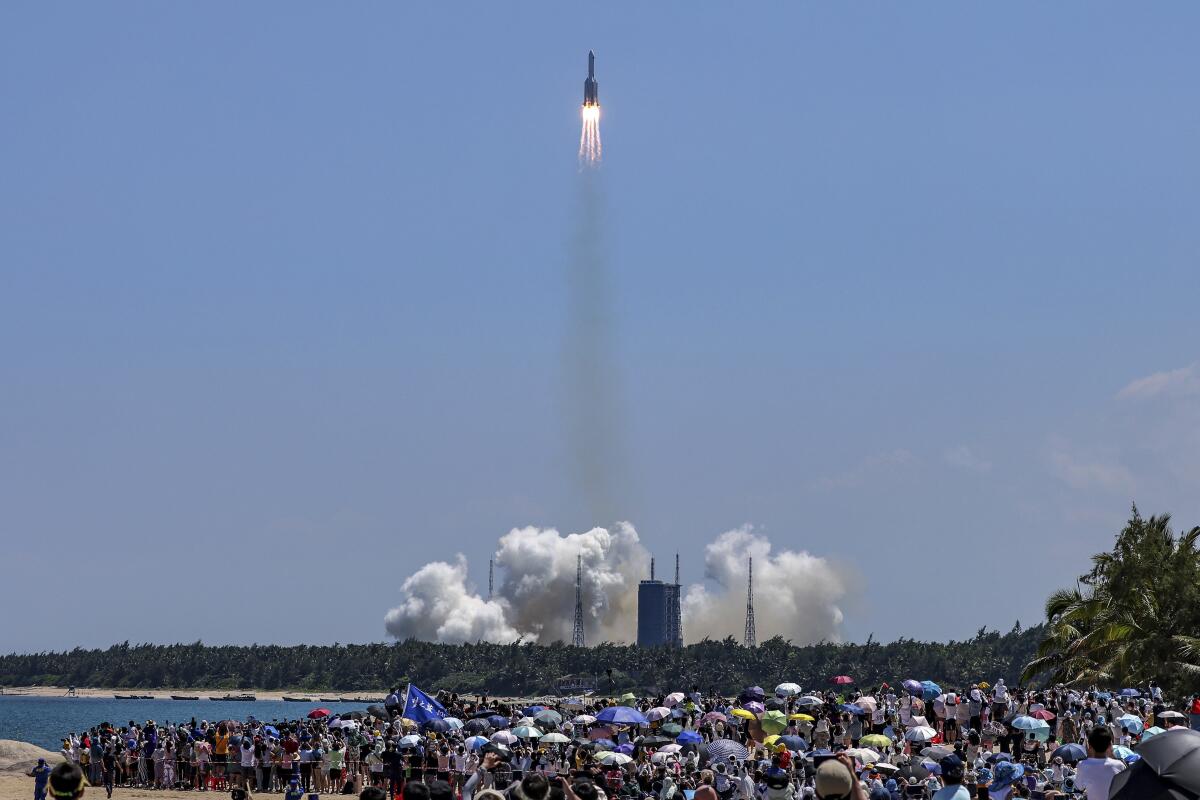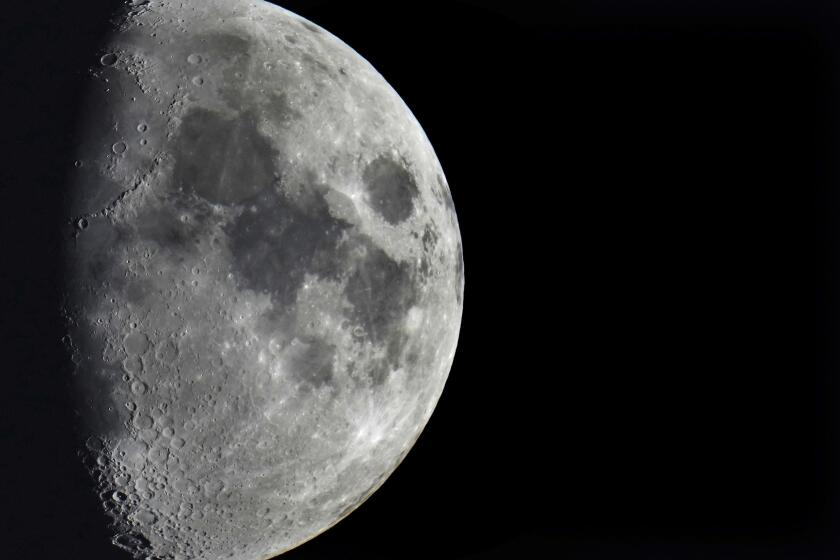No reported damage in Philippines from Chinese rocket debris

- Share via
MANILA — There was no reported damage in a western Philippine region where debris from a rocket that boosted part of China’s new space station reportedly fell, a Filipino official said Monday.
Philippine Space Agency official Marc Talampas said authorities have been advised to be on the lookout for the rocket debris, which may have splashed down into waters off Palawan province.
“We are monitoring the situation and have also issued an advisory to the public to be vigilant, avoid contact with any suspected floating debris and to report to local authorities immediately,” Talampas told the Associated Press.
The China Manned Space Agency reported Sunday that most of the final stage of the Long March-5B rocket burned up after entering the atmosphere. It said the booster would be allowed to fall unguided.
The agency’s announcement gave no details on whether remaining debris fell on land or sea but issued coordinates for a “landing area” corresponding to waters southeast of Palawan’s capital, Puerto Princesa.
The Philippine Space Agency did not receive any notifications from its Chinese counterpart about the rocket debris.
The moon is about to get walloped by a big piece of space junk
China has faced criticism for allowing rocket stages to fall to Earth uncontrolled twice before. NASA accused Beijing last year of “failing to meet responsible standards regarding their space debris” after parts of a Chinese rocket landed in the Indian Ocean.
The country’s first space station, Tiangong-1, crashed into the Pacific Ocean in 2016 after Beijing confirmed that it lost control. An 18-ton rocket fell uncontrolled in May 2020.
China also faced criticism after using a missile to destroy one of its defunct weather satellites in 2007, creating a field of debris that other governments said might jeopardize other satellites.
The July 24 launch of the Long March 5B, China’s most powerful rocket, carried the Wentian laboratory into orbit. It was attached to the Tianhe main module, where three astronauts live.
The remains of a separate cargo spacecraft that serviced the station fell into a predetermined area of the South Pacific after most of it burned up on reentry, the Chinese government announced earlier.
More to Read
Sign up for Essential California
The most important California stories and recommendations in your inbox every morning.
You may occasionally receive promotional content from the Los Angeles Times.














